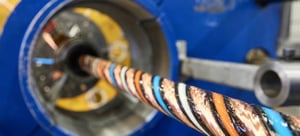 At Hardman and Co, we try to answer the questions of why to invest in a company and what the risks are in doing so. For many investors, simply having a deep discount to NAV is a good enough answer to the first question. However, investors need to appreciate the risks and, in particular, the reasons why the shares are at a discount. Having understood those risks, investors need to be convinced that there is a catalyst for change on the part of the manager and how long (if at all) it will take for market sentiment to reflect this in a lower discount. In this report, we examine the companies with the largest discounts and review those very issues.
At Hardman and Co, we try to answer the questions of why to invest in a company and what the risks are in doing so. For many investors, simply having a deep discount to NAV is a good enough answer to the first question. However, investors need to appreciate the risks and, in particular, the reasons why the shares are at a discount. Having understood those risks, investors need to be convinced that there is a catalyst for change on the part of the manager and how long (if at all) it will take for market sentiment to reflect this in a lower discount. In this report, we examine the companies with the largest discounts and review those very issues.
Executive Summary- Extract
Our key conclusion are as follows.
- The largest discounts reflect the compounding effects of multiple factors at play. Indeed, for every company in this report, we have identified more than one issue. While one factor, such as legacy performance, may be the major influence, the discount is materially worsened where other factors, such as corporate governance, play a role. Addressing all the issues is likely to materially accelerate discount reduction.
- In each case where we have identified legacy issues as a factor, the company has either “gone back to basics” or fundamentally restructured – so the outlook is fundamentally different from when the legacy event occurred. As the real risk has changed, the issue for investors is confidence that the manager can improve sentiment and convince potential buyers it will be different going forward.
- There is some correlation between stress-test scenarios disclosed in the Key Information Documents (KIDS), i.e. a prospective share price performance risk measure, and the level of the discount. We caution against over-reliance on this, given the nature of the calculation, and note the many exemptions to this rule. We do believe that some discounts are driven by prospective risks, rather than historical ones. We have identified the following factors: i) illiquid assets; ii) sensitivity of returns to macro drivers, including the cycle; iii) competitive pressures; and iv) regulation. We believe many of these are at least partially built into the valuation of assets.
- We have identified a range of other prospective issues, including concentration and diversity risk, and key staff dependency. In the main, we believe these reflect the underlying business model of the company and are unlikely to change. While a deterrent to some potential investors, they are also the reason why many of the buyers bought the company in the first place.
- We note that the accounting valuation for some of the businesses is driven by assumptions. There are some notable exceptions, such as where the assets are entirely, or nearly entirely, valued off liquid market prices, but several of the companies in this report have illiquid assets valued using models. We believe the key test here is what have been the realised prices relative to recent valuations. This is indicative of management conservatism. It does not mean that future assets will be sold at book, but it is a good indication that there is a cushion should market conditions worsen. It also requires a several disposals to prove consistency in approach.
- On fees, we note that every company covered in this report has KID-disclosed fee levels that are above the average for investment companies (ICs) as a whole (on average, 3x market levels). However, we also note that there is no correlation between fees and discounts among these companies. KID disclosure is also far from perfect (including, for example, debt financing costs). In addition, we note that the type of asset often requires a higher cost to be managed effectively and gives investors diversified risk. The fees must be considered in the light of risk-adjusted returns, as we believe investors are willing to pay for businesses with a long track record of higher returns, given their superior net return. Overall, we conclude that high fees, in isolation, are unlikely to drive the biggest discounts.
- We believe corporate governance is an important issue for several companies in our report. In particular, we note situations where the public shareholders do not have controlling votes. We appreciate that, for the companies/management, this could provide further assurance of committed long-term capital, allowing them greater flexibility for conviction investments. However, we note that non-voting shares typically trade at a discount to voting shares. Our analysis indicates that this could account for 5%-10% discounts, compounding the effect of other issues.
- We also note that major shareholding and related party transactions may have an influence on sentiment, liquidity and potential buybacks – and so on the level of discount.
- We note that fewer than half of the companies in this report have used buy-back discount-management techniques over the past year. The approaches have varied from single tender offers all the way through to daily dealings. We believe the boards are balancing the obvious advantages of such techniques with the facts that buybacks also i) may not be the best use of capital, ii) worsen expense ratios and leverage, iii) restrict further investments, and iv) send confusing messages to investors and staff. Clearly, the balance is driven by the level of discount.









































